F
FaceandHFD
Mythic
★★★★★
- Joined
- Sep 6, 2018
- Posts
- 4,908
Because of several invasions of central asian mongoloid people in europe, eastern and central european people have adopted mongoloid features.
Italian politician Matteo Salvini, for example, looks 100% eurasian and is not white.

Huns:

Bulgars:

 /
/
Pannonian Avars:

Magyars:

Khazars:

Finno-ugric people:

Mongols:

Ottomans:

Italian politician Matteo Salvini, for example, looks 100% eurasian and is not white.
Huns:
4th-6th century AD
Physical appearance:
"Ancient descriptions of the Huns are uniform in stressing their strange appearance from a Roman perspective. These descriptions typically caricature the Huns as monsters.[35] Jordanes stressed that the Huns were short of stature and had tanned skin.[36] Various writers mention that the Huns had small eyes and flat noses.[37] The Roman writer Priscus gives the following eyewitness description of Attila: "Short of stature, with a broad chest and a large head; his eyes were small, his beard thin and sprinkled with grey; and he had a flat nose and tanned skin, showing evidence of his origin."[38]

 en.wikipedia.org
en.wikipedia.org
Physical appearance:
"Ancient descriptions of the Huns are uniform in stressing their strange appearance from a Roman perspective. These descriptions typically caricature the Huns as monsters.[35] Jordanes stressed that the Huns were short of stature and had tanned skin.[36] Various writers mention that the Huns had small eyes and flat noses.[37] The Roman writer Priscus gives the following eyewitness description of Attila: "Short of stature, with a broad chest and a large head; his eyes were small, his beard thin and sprinkled with grey; and he had a flat nose and tanned skin, showing evidence of his origin."[38]

Huns - Wikipedia
 en.wikipedia.org
en.wikipedia.org
Bulgars:
In the medieval history of Europe, Bulgaria's status as the Bulgarian Empire (Bulgarian: Българско царство, Balgarsko tsarstvo [ˈbəlɡɐrskʊ ˈt͡sarstvʊ]), wherein it acted as a key regional power (particularly rivaling Byzantium in Southeastern Europe[1]) occurred in two distinct periods: between the seventh and eleventh centuries, and again between the twelfth and fourteenth centuries. The two "Bulgarian Empires" are not treated as separate entities, but rather as one state restored after a period of Byzantine rule over its territory.
The Bulgars were semi-nomadic warrior tribes originating from Central Asia whose exact ethnic origin is controversial. They spoke a form of Turkic language and during their migration westwards they absorbed other ethnic groups and cultural influences, including Hunnic, Iranian and Indo-European people.[31][32] The Bulgars included the tribes of Onogurs, Utigurs and Kutrigurs, among others.
 en.wikipedia.org
en.wikipedia.org
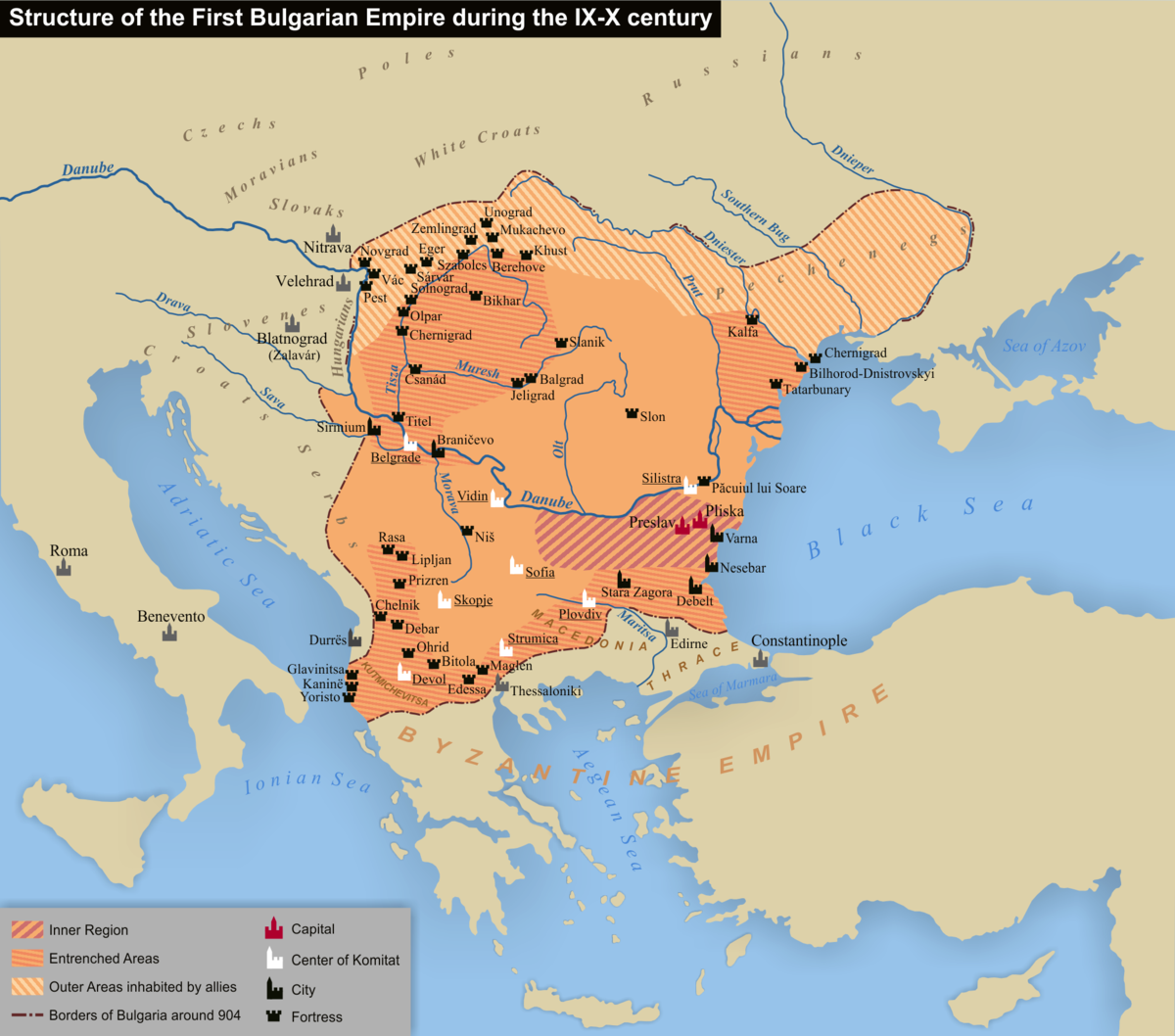
 en.wikipedia.org
en.wikipedia.org
The Bulgars were semi-nomadic warrior tribes originating from Central Asia whose exact ethnic origin is controversial. They spoke a form of Turkic language and during their migration westwards they absorbed other ethnic groups and cultural influences, including Hunnic, Iranian and Indo-European people.[31][32] The Bulgars included the tribes of Onogurs, Utigurs and Kutrigurs, among others.
Bulgarian Empire - Wikipedia

First Bulgarian Empire - Wikipedia
 en.wikipedia.org
en.wikipedia.org
Pannonian Avars:
The Pannonian Avars (/ˈævɑːrz/; Old Turkic: , romanized: Apar,[9] also known as the Obri in chronicles of Rus, the Abaroi or Varchonitai[10] Greek: Βαρχονίτες, romanized: Varchonítes, or Pseudo-Avars[11] in Byzantine sources) were an alliance of several groups of Eurasian nomads of unknown origins.[12][13][14][15][16][17]
They are probably best known for their invasions and destruction in the Avar–Byzantine wars from 568 to 626.
The name Pannonian Avars (after the area in which they eventually settled) is used to distinguish them from the Avars of the Caucasus, a separate people with whom the Pannonian Avars might or might not have had links.
They established the Avar Khaganate, which spanned the Pannonian Basin and considerable areas of Central and Eastern Europe from the late 6th to the early 9th century.[18]
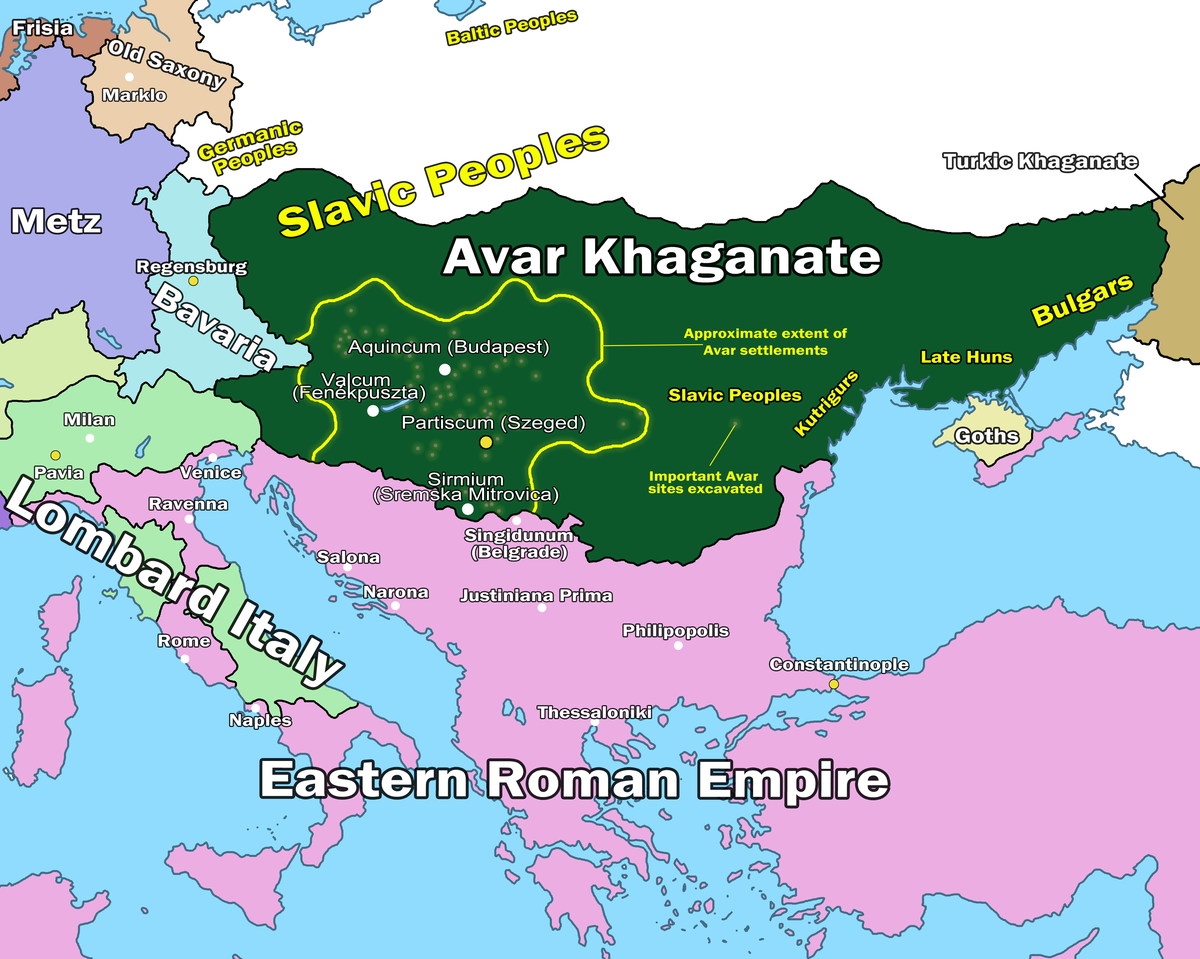
 en.wikipedia.org
en.wikipedia.org
They are probably best known for their invasions and destruction in the Avar–Byzantine wars from 568 to 626.
The name Pannonian Avars (after the area in which they eventually settled) is used to distinguish them from the Avars of the Caucasus, a separate people with whom the Pannonian Avars might or might not have had links.
They established the Avar Khaganate, which spanned the Pannonian Basin and considerable areas of Central and Eastern Europe from the late 6th to the early 9th century.[18]

Pannonian Avars - Wikipedia
Magyars:
Genetics:Magyars comprised seven clans and later three more clans made of Kabar people. Recent genetic research have shown that the first-generation Magyar core gene pool originated in Central Asia/South Siberia and, as Magyars were moving westward, admixing with additional strata of people of European origin, and people of the Caucasus. Burial samples of the Karos-Eperjesszög Magyars place them genetically closest to Turkic peoples, modern south Caucasian peoples, and modern Western Europeans to a limited degree, while no specific Finno-Ugric markers were found.[14] However, a 2008 study done on 10th century Magyar skeletons, indeed found a few Uralic samples
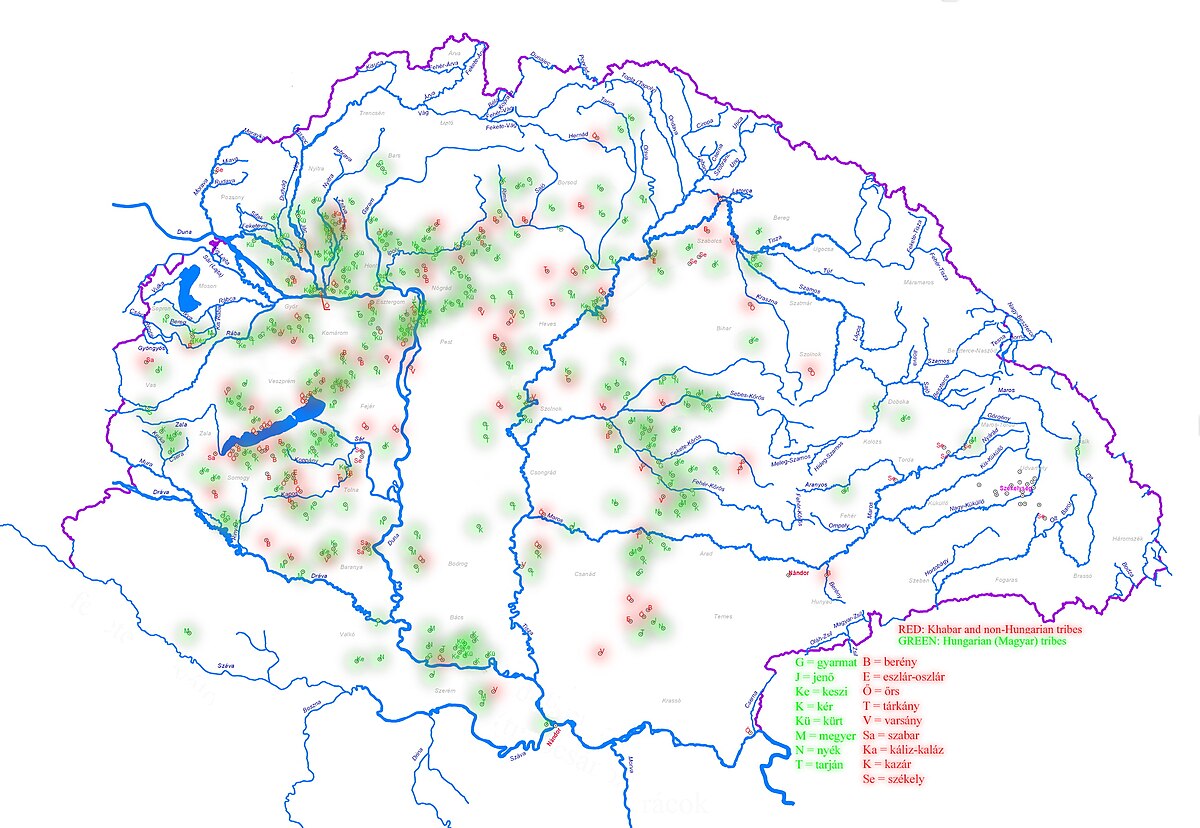
 en.wikipedia.org
en.wikipedia.org

Magyar tribes - Wikipedia
 en.wikipedia.org
en.wikipedia.org
Khazars:
Determining the origins and nature of the Khazars is closely bound with theories of their languages, but it is a matter of intricate difficulty since no indigenous records in the Khazar language survive, and the state was polyglot and polyethnic. The native religion of the Khazars is thought to have been Tengrism, like that of the North Caucasian Huns and other Turkic peoples.[17] The polyethnic populace of the Khazar Khaganate appears to have been a multiconfessional mosaic of pagan, Tengrist, Jewish, Christian and Muslim worshippers.[18] The ruling elite of the Khazars was said by Judah Halevi and Abraham ibn Daud to have converted to Rabbinic Judaism in the 8th century,[19] but the scope of the conversion within the Khazar Khanate remains uncertain.
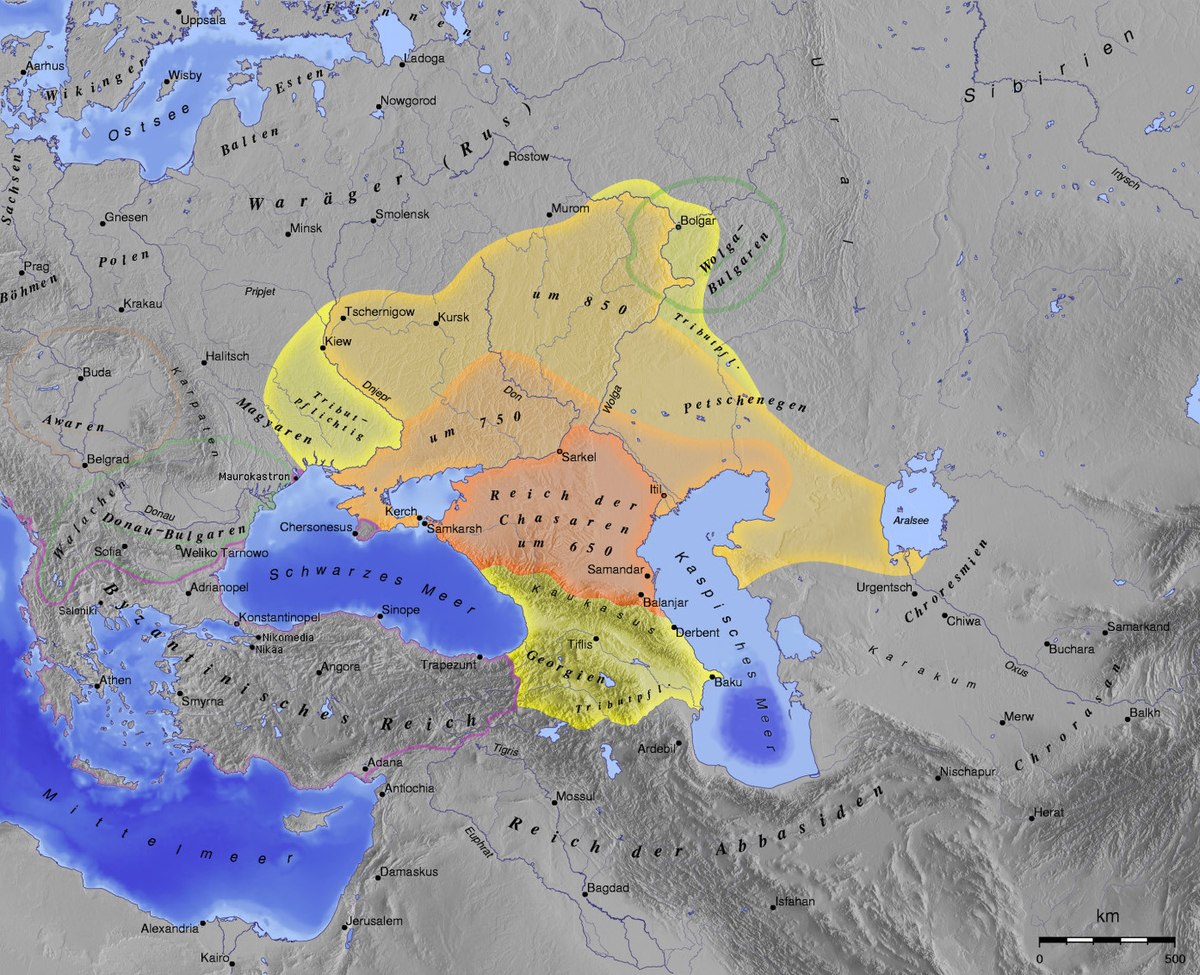
 en.wikipedia.org
en.wikipedia.org

Khazars - Wikipedia
Finno-ugric people:
A study of Population Genetics of Finno-Ugric speaking humans in North Eurasia carried out between 2002–2008 in the Department of Forensic Medicine at the University of Helsinki showed that most of the Finno-Ugric speaking populations possess an amalgamation of West and East Eurasian gene pools, genetic drift, and recurrent founder effects. North Eurasian Finno-Ugric-speaking populations were found to be genetically a heterogeneous group showing lower haplotype diversities compared to more southern populations. North Eurasian Finno-Ugric-speaking populations possess unique genetic features due to complex genetic changes shaped by molecular and population genetics and adaptation to the areas of Boreal and Arctic North Eurasia.[14]
 en.wikipedia.org
en.wikipedia.org
Finno-Ugric countries - Wikipedia
Mongols:
The Mongol invasion of Europe in the 13th century was the conquest of much of Europe by the Mongol Empire. The first wave of invasions occurred from the 1220s into the 1240s. In Eastern Europe, the Mongols destroyed Volga Bulgaria, Cumania, and Russian principalities such as Kiev and Vladimir. In Central Europe, the Mongol armies launched a two-pronged invasion of fragmented Poland, culminating in the Battle of Legnica (9 April 1241), and the Kingdom of Hungary, culminating in the Battle of Mohi (11 April 1241).[1] Invasions also were launched into the Caucasus against the Kingdom of Georgia and the Chechens and Ingush. The operations were planned by General Subutai (1175–1248) and commanded by Batu Khan (c. 1207–1255) and Kadan (d. c. 1261). Both men were grandsons of Genghis Khan; their conquests integrated much European territory to the empire of the Golden Horde. Warring European princes realized they had to cooperate in the face of a Mongol invasion, so local wars and conflicts were suspended in parts of central Europe, only to be resumed after the Mongols had withdrawn.[2] After the initial invasions, subsequent raids and punitive expeditions continued into the late 13th century.
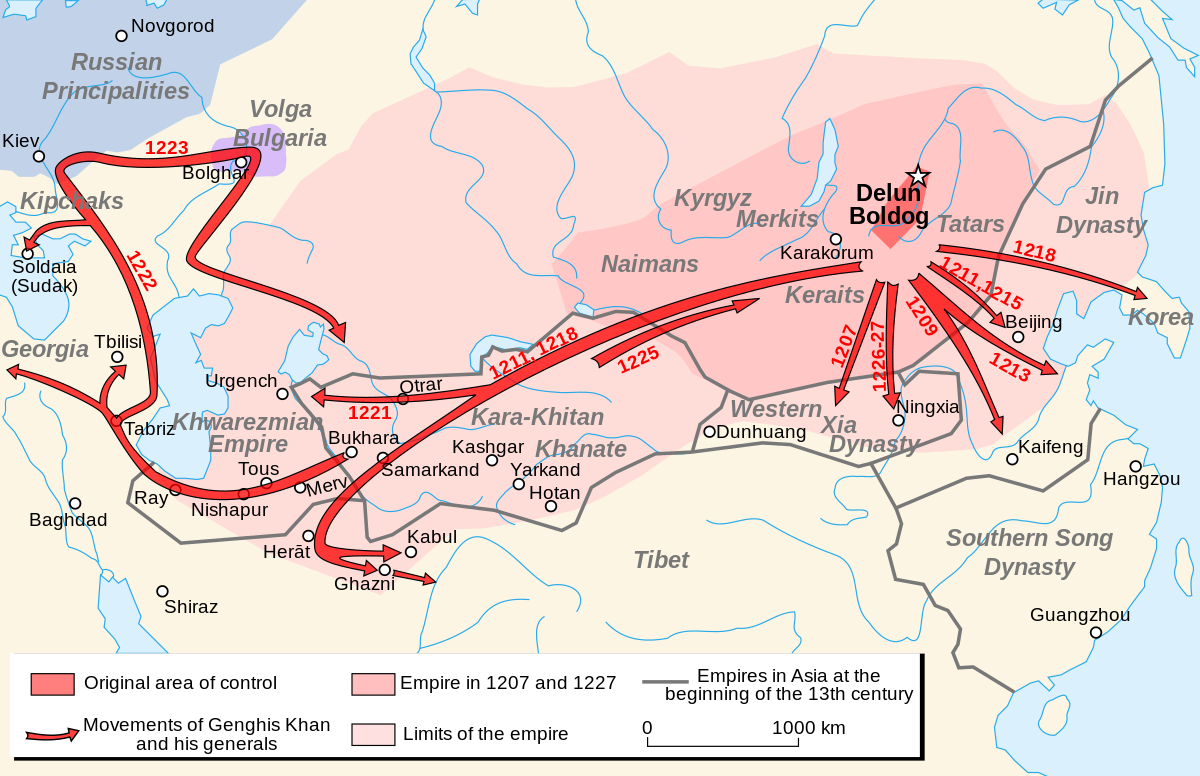
 en.wikipedia.org
en.wikipedia.org

Mongol invasion of Europe - Wikipedia
 en.wikipedia.org
en.wikipedia.org
Ottomans:





